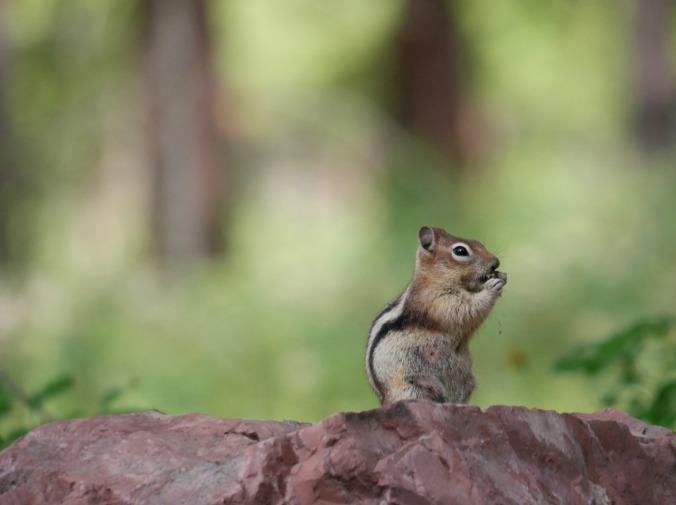
Callospermophilus lateralis “Golden Mantled Ground Squirrel” Sciuridae
Blackfoot River Recreation Corridor (BLM), MT
June 8, 2016
Robert Niese
Look at this adorable little fatling! Golden Mantled Ground Squirrels are a common, endearingly pudgy species found throughout western North America east of the cascades and Sierras. They, along with dozens of other ground squirrel species (41, to be precise), were part of the Great Ground Squirrel Generic Revision of 2009. In this taxonomic revision, mammalogists at the Smithsonian National Museum of Natural History determined that the mega-genus Spermophilus was likely a paraphyletic clade of 8 separate genera. Callospermophilus was one of those genera that rose from the ashes of the Spermophilus mega-genus. Today it remains a distinct genus with only three species, all of which are restricted to western North America. Here in the PNW, one of these species, C. saturatus, is endemic to the Cascade range where it likely became isolated by the Columbia River, allowing it to differentiate from its eastern sister species, C. lateralis.


